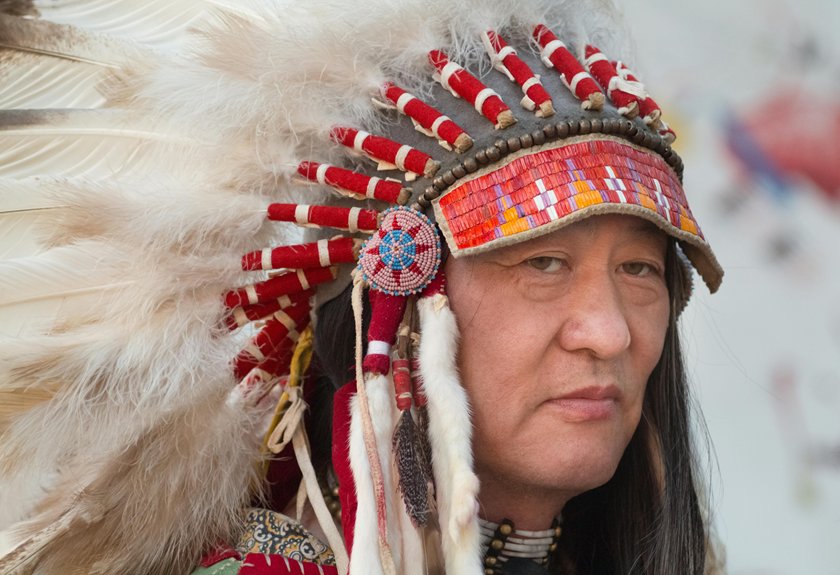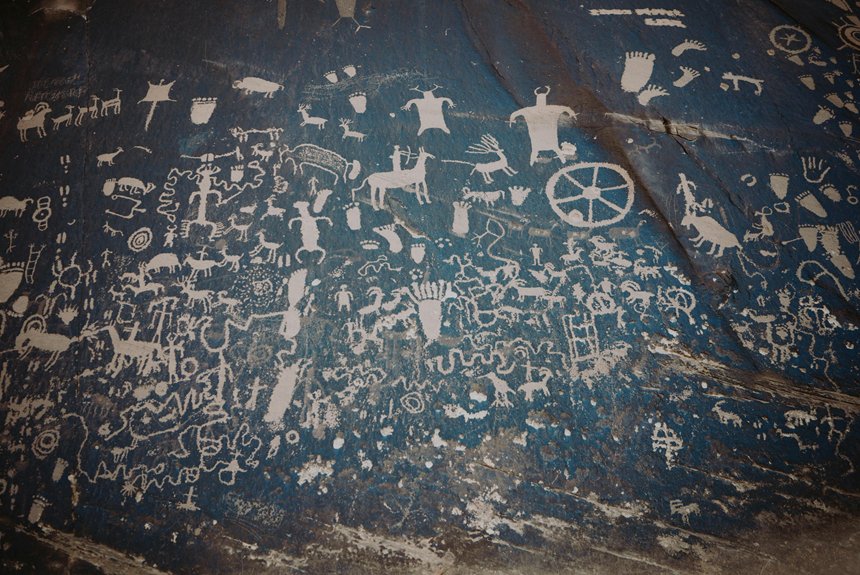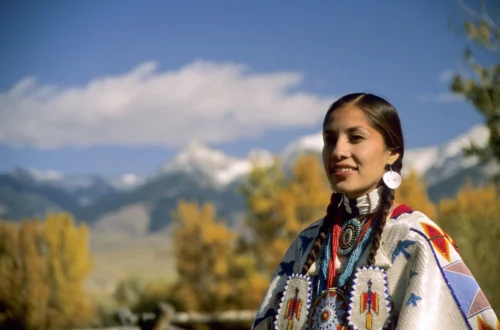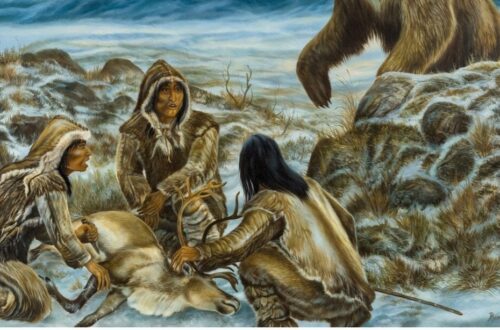Like the ancient migrations that shaped our world, the question of whether Native Americans are Asian invites a nuanced exploration of history and identity. Genetic studies suggest a shared ancestry with Siberian populations, revealing pathways that connected continents. Yet, this connection doesn’t fully capture the rich cultural tapestry that defines Native American identities today. What does this mean for our understanding of race and heritage in a modern context?
The Bering Land Bridge: A Pathway to the Americas
As you explore the fascinating history of human migration, you’ll discover how the Bering Land Bridge served as a crucial pathway for early peoples moving from Asia to the Americas.
This land bridge, which emerged during the last Ice Age, connected Siberia to Alaska, allowing ancient hunter-gatherers to traverse vast distances in search of resources.
Over thousands of years, these early inhabitants adapted to diverse environments, setting the stage for the rich tapestry of cultures that would develop across North America.
Their journeys weren’t just about survival; they forged connections with the land and each other, laying the groundwork for future generations.
Understanding this migration helps illuminate the complex heritage of Native American peoples and their enduring relationship with the Americas.
Genetic Evidence of Asian Ancestry
While the migration of early peoples across the Bering Land Bridge is a well-documented phenomenon, genetic evidence offers a deeper understanding of the relationship between Native Americans and their Asian ancestors.
Studies of mitochondrial DNA and Y-chromosome markers reveal that Native Americans share significant genetic similarities with populations in Siberia and East Asia. These findings suggest a direct lineage, supporting the idea that the ancestors of Native Americans migrated from Asia thousands of years ago.
Additionally, specific genetic traits common in both groups highlight adaptations to similar environments. By examining these genetic links, you gain insight into the complex ancestry of Native Americans, emphasizing their historical ties to Asia and enriching your understanding of their heritage.
Archaeological Discoveries Supporting Migration Theories
The genetic evidence linking Native Americans to their Asian ancestors is complemented by significant archaeological discoveries that reinforce migration theories.
Sites like Clovis in New Mexico and Monte Verde in Chile provide concrete evidence of early human habitation in the Americas, dating back thousands of years. Tools and artifacts found in these locations suggest sophisticated cultures that likely migrated from Asia via the Bering land bridge.
Additionally, the discovery of ancient remains with Asian characteristics in North America supports the idea of a migration route. These findings indicate that the journey of Native Americans began long ago, shaping their unique identities while connecting them to their ancestral roots.
Understanding these archaeological findings helps clarify the complexities of human migration.
Cultural Similarities Between Native Americans and Asians
Cultural connections between Native Americans and Asians reveal fascinating similarities that stem from their shared ancestral roots. You might notice these parallels in various aspects of life, including:
- Spiritual Practices: Both cultures emphasize a deep respect for nature and the interconnectedness of all living things, often incorporating rituals that honor the earth.
- Art and Craftsmanship: Traditional arts, like weaving and pottery, showcase vibrant colors and patterns that reflect their environments, telling stories of heritage and identity.
- Community Values: Family and community are central to both cultures, fostering support systems that prioritize collective well-being over individualism.
These shared traits highlight the rich tapestry of human experience, inviting you to explore the profound connections between these diverse cultures.
The Role of Climate Change in Migration Patterns
As climate change increasingly disrupts ecosystems and alters weather patterns, it’s becoming clear how these shifts impact migration patterns across the globe. Rising temperatures, extreme weather events, and changing resources force communities to adapt or relocate.
For Indigenous peoples, these changes threaten traditional ways of life, pushing them to seek new habitats. Historical migrations, like those of early Native Americans, demonstrate that humans have always moved in response to environmental changes.
Today, the urgency is heightened; you may witness how climate-related events displace entire populations, creating new cultural dynamics. Understanding these patterns not only sheds light on the past but also emphasizes the importance of addressing climate issues to preserve cultural heritage and support sustainable coexistence for future generations.
Linguistic Connections: Language Families and Origins
While exploring the origins of Native American languages, you’ll uncover fascinating connections that trace back to ancient migrations.
These languages belong to several distinct families, each revealing unique aspects of cultural identity. You might find it intriguing to contemplate:
- Algic: Encompassing languages like Ojibwe and Cree, showcasing rich storytelling traditions.
- Siouan: Including Lakota and Dakota, highlighting strong ties to the Great Plains and its history.
- Athabaskan: Featuring Navajo and Apache, reflecting the resilience and adaptability of their speakers.
Through these linguistic families, you see how language acts as a vessel for culture, history, and identity, illustrating the diverse experiences of Native American peoples throughout time.
Understanding these connections deepens our appreciation for their heritage.
The Impact of Ancient Population Movements
The exploration of Native American languages not only highlights their rich diversity but also points to the significant impact of ancient population movements that shaped their development.
These movements, which occurred thousands of years ago, brought diverse groups to the Americas, creating a complex tapestry of cultures and languages.
As you investigate this history, you’ll discover how migrations from Asia to North America influenced linguistic structures and vocabulary.
Over generations, these groups adapted and evolved their languages, intertwining with local environments and experiences.
This linguistic evolution reflects not only survival but also the rich cultural identities that emerged.
Understanding these ancient movements offers valuable insights into the roots of Native American languages and their enduring legacy today.
Modern DNA Studies and Their Implications
Modern DNA studies have revolutionized our understanding of the connection between Native Americans and their ancient ancestors in Asia.
These advancements reveal fascinating insights into human migration and lineage. You might find the following points particularly striking:
- Genetic Links: Modern analyses show significant genetic similarities between Native Americans and populations in Siberia, supporting theories of migration across the Bering Strait.
- Diverse Ancestry: DNA evidence highlights a complex ancestry, suggesting multiple waves of migration and mixing over thousands of years.
- Cultural Connections: Genetic findings help illuminate the rich cultural ties that Native Americans share with their distant Asian ancestors, deepening our appreciation for their histories.
These studies challenge and enrich our understanding of identity and heritage among Native American communities.
Indigenous Identity and the Concept of Race
Understanding indigenous identity requires guiding you through the complex interplay between culture, history, and the evolving concept of race.
Indigenous peoples, often categorized based on physical traits, have rich, diverse cultures that defy simplistic racial classifications. You’ll find that identity is closely tied to community, heritage, and connection to land, which transcends mere genetics.
The concept of race, often a social construct, can sometimes obscure the deep historical narratives and lived experiences of these communities. Recognizing this complexity fosters a more nuanced understanding of who indigenous peoples are, moving beyond stereotypes.
Embracing their unique identities means acknowledging their histories and ongoing struggles, shaping a more respectful dialogue about race and belonging in today’s world.
The Continuing Debate Among Scholars
While scholars have long debated the origins of Native Americans, recent research continues to challenge and refine our understanding of their ancestral connections to Asia. This ongoing discussion focuses on several key areas:
- Genetic Evidence: Advances in DNA analysis reveal complex migration patterns and relationships between Native Americans and ancient Asian populations.
- Archaeological Findings: New discoveries at sites like Beringia provide insights into the routes early peoples took as they migrated across land bridges.
- Cultural Connections: Linguistic and cultural parallels highlight shared traditions and practices that may trace back to ancient Asian roots.
As you explore these facets, you’ll see how this debate not only illuminates history but also emphasizes the rich tapestry of Indigenous identities today.
Understanding these complexities is essential for appreciating Native American heritage.




